What's New
Displaying results 2631 - 2640 of 4052
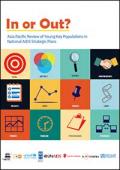
Resource | Publications,
In Asia, it has been estimated that more than 95 per cent of all new infections among young people are occurring among young key populations at higher risk of HIV exposure. Behaviours which place young people at a higher risk for HIV infection such as unprotected paid sex, unprotected sex between males, and the sharing of contaminated injection equipment, often start at an early age. It can be difficult for young people, including those from key populations, to access HIV-related information and services. Barriers to access may hinge upon social, cultural, religious, financial, logistical, or legislative issues. These mean young key populations are more likely to have a poor understanding of HIV, inadequate access to health and support services as well as greater engagement in high-risk behaviours. In many countries this is translating into early HIV infection and the potential for escalated growth of the epidemic.
To better understand how countries are tackling the HIV epidemic among young key populations, a number of agencies agreed to partner to investigate how these groups were being addressed in national AIDS strategic plans in the Asia-Pacific region. This report is the outcome of this effort, and aims to inform country-based reviews and progress reports of current NSPs, and the development of future plans with greater attention to these populations.
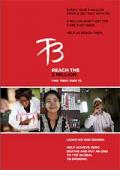
Resource | Publications,
TB is infectious and spreads through the air. A third of the world's population has been infected by TB bacteria but only one in 10 will fall ill. For those with active TB, the symptoms may be mild for many months, leading to delays in diagnosis and treatment, while spreading the disease to others. Most people with TB can be cured by taking a six-month course of drugs. If treatment is incomplete, TB can come back, often, in a more resistant form. People with TB also suffer discrimination and stigma, rejection and social isolation. While there has been major progress in fighting TB, more needs to be done.
About 3 million people are "missed" each year by health systems and many therefore do not get the TB care that they need and deserve. Many of the missed will die, some will get better, others will continue to infect others.
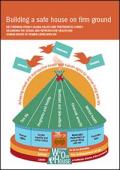
Resource | Publications,
Background and Process
● 50–55% of adults living with HIV globally are women.
● The World Health Organization (WHO) 2006 guidelines "Sexual and reproductive health of women living with HIV/AIDS" need to be updated.
● This values and preferences survey was created to inform the Guideline update process.
● The survey was led, informed and run by women living with HIV, including: two of the coordinating team; all 14 of the Global Reference Group;1 and six of the leaders of the focus group discussions.
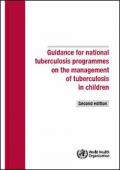
Resource | Tools,
The first edition of Guidance for national tuberculosis programmes on the management of tuberculosis in children was published in 2006. It resulted in the revision or development of guidelines for child TB management by national TB programmes in many TB-endemic countries. Now, however, newly published evidence and new recommendations have made it necessary to update the original 2006 guidance.
Like the original, this second edition aims to inform the revision of existing national guidelines and standards for managing TB, many of which include guidance on children. It includes recommendations, based on the best available evidence, for improving the management of children with TB and of children living in families with TB. National and regional TB control programmes may wish to adapt these recommendations according to local circumstances.
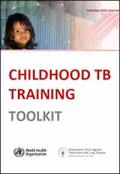
Resource | Tools,
It is estimated that there are more than half a million cases of tuberculosis (TB) in children occurring globally each year. In settings with a high overall incidence of TB, children can account for a large proportion (up to one-third) of all TB cases. As a consequence, TB is an important cause of morbidity and mortality in children in TB endemic countries.
The focus is on the common challenges for diagnosis, treatment and prevention. It is often stated that the diagnosis of children is difficult. It is certainly difficult to confirm the diagnosis of TB in the majority of children with disease but the clinical diagnosis of TB in children can often be straightforward. It is often perceived that children with suspected TB disease or children in close contact with TB cases need referral to specialist paediatric services at central hospital level but this is not necessary for most cases. Therefore, the training material sets out to emphasize the management issues of the common cases in the usual scenario of presentation, not to replace the need for specialist referral and opinion.
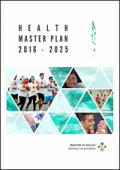
Resource | Publications,
The Health Master Plan 2016-2025 provides strategic direction and guidance to all partners in health and collaborative sectors to further develop policies, plans, and programs to improve the health of the population.
A review of the Health Master Plan 2006-2015 was carried out in 2014 and the new Health Master Plan 2016-2025 was formulated. Emphasis was made on the lessons learned from the implementation of the preceding plan and focus was given to new priorities while sustaining the achievements of the previous plan. This process was a collaborative and a consultative effort by national stakeholders. Consecutive meetings and discussions were carried out with stakeholders including public and private sectors as well as participation from political parties, Non-Governmental states, independent commissions and authorities, international development agencies and public in general.
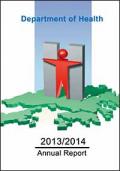
Resource | Publications,
This annual report of the Department of Health reviews the health of our community, introduces the Department’s health services, highlights our work in that year and outlines our future work.
In 2013, emerging communicable diseases continued to be one of the threats to the health of our community. The Middle East Respiratory Syndrome remained active in the Middle East while over a hundred cases of human infection of avian influenza A (H7N9) were also recorded in the Mainland with sporadic imported cases reported locally. In response to these challenges, the Department implemented various measures to guard against the threats of these diseases. With the conjoint efforts of the Department and the community at large, Hong Kong was free from local outbreak of these emerging communicable diseases.
Reducing the impact of non-communicable diseases is also an important area of work of the Department. Tobacco control and reduction of alcohol-related harm have been public health priorities in Hong Kong.
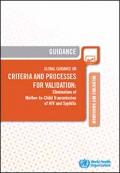
Resource | Guidelines,
The global community has committed itself to eliminating mother-to-child transmission (MTCT) of HIV and syphilis as a public health priority. The initiative to eliminate mother-to-child transmission (EMTCT) of HIV and syphilis focuses on a harmonized approach to improving health outcomes for mothers and children. The global community has set international and regional goals, and countries are scaling up programmes towards EMTCT of HIV and syphilis.
This document outlines minimum global processes and criteria for validation of EMTCT of HIV and/or syphilis in a country; provides a description of global EMTCT validation targets and indicators; explains the operation of validation committees and secretariats; and reviews the validation procedure itself, including maintenance of validation status. This document is intended for use by national, regional, and global validation committees for EMTCT of HIV and/or syphilis, national AIDS and sexually transmitted infection (STI) programme managers, maternal and child health programme managers, monitoring and evaluation (M&E) officers, policy-makers and staff of technical agencies, and international partners involved in supporting initiatives for EMTCT of HIV and/or syphilis.
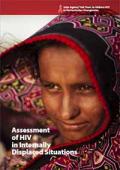
Resource | Tools,
The factors that determine HIV transmission in internally displaced situations are complex and depend on the context. Internally displaced persons (IDPs) are defined as “persons or groups of persons who have been forced or obliged to flee or to leave their homes or places of habitual residence, in particular as a result of, or in order to avoid, the effects of armed conflict, situations of generalized violence, violations of human rights or natural or human-made disasters, and who have not crossed an internationally recognized state border”.
Following immediate response in emergencies, including minimal initial HIV and reproductive health interventions, more comprehensive HIV programming needs to be developed for IDPs. A broader framework for response is needed because the focus of intervention shifts from individuals to general social situations, processes, and displacement phases in which IDPs and their families live, which may continue for long periods of time.






